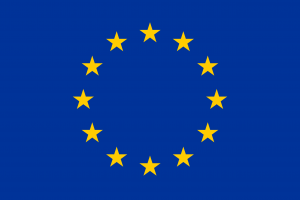Position of the European Union - Compliance with and verification under the Biological and Toxin Weapons Convention
POSITION OF THE EUROPEAN UNION ON COMPLIANCE WITH AND VERIFICATION UNDER THE BIOLOGICAL AND TOXIN WEAPONS CONVENTION
- The EU and its Member States are committed to strengthening the functioning of the Biological and Toxin Weapons Convention (BTWC). Measures to improve, monitor, and verify compliance with the Convention are significant steps towards this end.
- In this regard, the EU supports the development and adoption of specific, practical, and realistic measures to verify compliance with the BTWC.
- The EU reiterates its readiness to explore in greater depth the issue of verification, taking into account the developments in science and technology relevant to the Convention as well as the evolution of threats. Recent advances in the life sciences and the rapid progress in Artificial Intelligence lower barriers to the misuse of biotechnology while simultaneously increasing potential damage, adding to the urgency of concrete measures strengthening the BTWC.
- In the absence of a binding verification protocol, Confidence Building Measures (CBMs) are an important instrument to build mutual trust by sharing information between States Parties in order to enhance compliance. The EU calls on all parties to submit CBMs.
Further strengthening of verification under the BTWC
- The EU regrets that limited progress has been made in the BTWC discussions about verification since the early 2000s. A large majority of States Parties has clearly shown interest in and has voiced support for strengthening verification under the BTWC.
- Verification clearly is one of the main issues in the agenda of this Working Group. EUMS are ready to engage in the discussion on this topic in the upcoming inter-sessional period in order to achieve concrete results in the run up to the Tenth Review Conference.
- The EU shares the view that verification is a process that requires a common understanding among all States Parties. States Parties need to find common ground on the objectives and principles guiding the verification process.
- The EU sees no benefits in resuming prior negotiations on a BTWC verification protocol, concluded in 2001, for our future deliberations and engagement. Nevertheless, our approach should incorporate lessons learned from previous negotiations in VEREX and the Ad-Hoc Group, ensuring a more productive discussion for the development of an effective verification instrument.
- A verification instrument for the BTWC needs to take into account technological progress and other general experiences within the disarmament field within the last 22 years. While our aspiration for the strengthening of the Convention through an effective verification regime should remain high, we also need to approach this with pragmatism and realism, aligning our expectations with achievable objectives of a future regime. The 21st century verification regime should consider contemporary BW risks and the significant achievements in Science and Technology developments.
- The EU firmly believes that the development of a verification regime for the BTWC demands the integration of several essential elements to enhance transparency, monitor compliance, and address compliance concerns in a quick and effective manner.
- A BTWC verification regime must commence with focused and transparent national declarations. These declarations could be harmonized with existing Confidence-Building Measures (CBMs) to facilitate the sharing of information and promote trust among States Parties. They must consistently provide updated information on their biological programmes related to the BTWC.
- In the event of serious suspicion of BTWC violations, a special (challenge) inspection mechanism need to be triggered. This will allow States Parties to request an inspection of facilities where concerns about illicit biological weapons activities arise. The mechanism must clearly outline the process, criteria, and procedures for such inspections.
- The EU is a staunch and long-standing supporter of the UN Secretary-General’s Mechanism for Investigation of Alleged Use of Chemical and Biological Weapons (UNSGM) as the only existing independent international instrument for the investigation of alleged use of biological weapons. Creating a direct link to the UNSGM is essential to enhance the credibility of the BTWC verification system. The exchange of information and expertise will foster effective responses to alleged violations and speed up the identification of the origin of a biological event. It is vital to promptly identify its impact in real-time and to prevent future risks.
- In line with the principle of transparency, the EU advocates for a verification regime involving international experts with profound knowledge of biological agents and disarmament. The regime must strongly emphasize non-proliferation and effectively address the dual-use nature of biotechnology and related technologies, thus preventing the potential misuse of biotechnology for malicious purposes.
- To ensure its effectiveness, the EU believes that the BTWC verification regime should undergo periodic reviews and be adaptable to evolving threats and technological advancements. Rapid progress in biotechnology will significantly change the risk landscape by reducing the resources required to misuse biological agents and toxins, decentralising risks away from large-scale biological facilities and laboratories. States Parties should collectively assess the regime's performance and propose necessary improvements to face such developments. Review Conferences of States Parties have the necessary authority to consider and decide on any further action in this regard.
- The EU believes that the regime must include provisions for safeguarding sensitive and confidential information, protecting national security interests while ensuring transparency and accountability.
- Technological progress allows for new and promising means of verification that go beyond the methods discussed previously in the framework of the BTWC, such as AI and bioinformatic tools.
